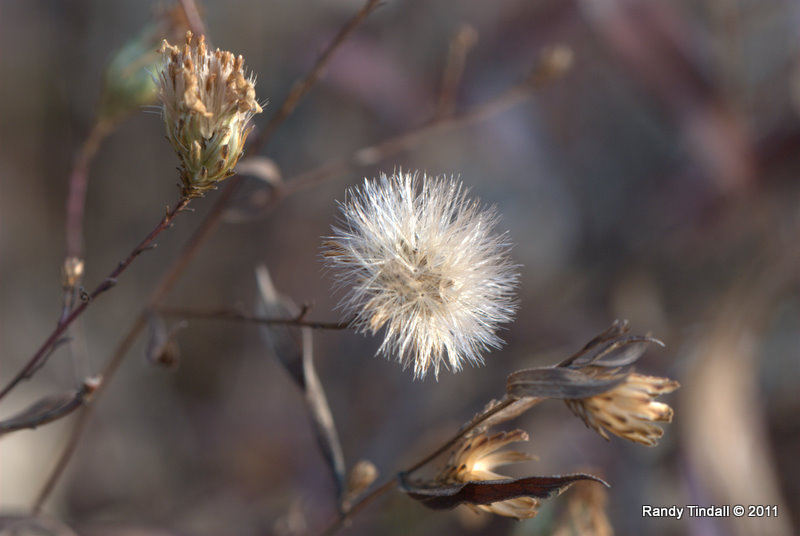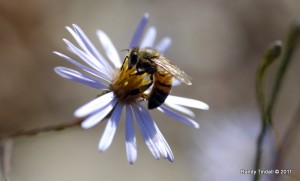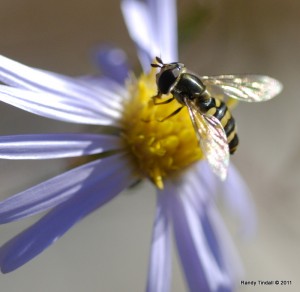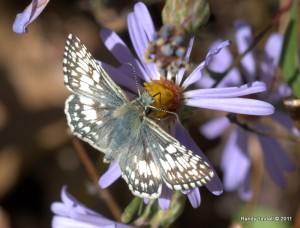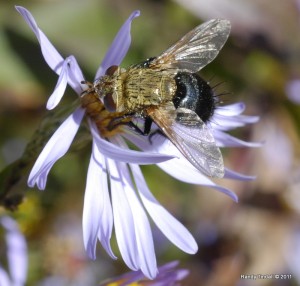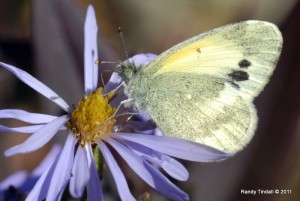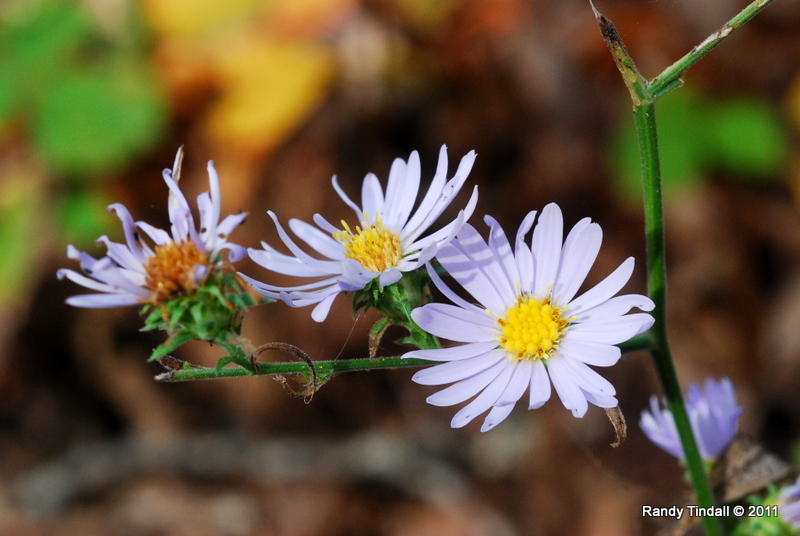She was the last to leave us, hanging on as long as she could, like her namesake goddess, Astraea, but leave us she did. A mild freeze here and there couldn’t stop her, but a couple of nights in the teens to low twenties with an inch of snow, and even our faithful Sky Blue Aster had to give up for the season. There were hardly any bees or nectar-feeding flies left to care for anyway, but even they hung on this year until late November, early December. Sky Blue was there for them, as long as they needed her.
Symphyotrichum oolentangiensis (once Aster azureus, then Aster oolentangiense—some people just can’t make up their minds) has a place of honor in our yard, out near the sidewalk, along the street, where its late-blooming habits provide a splash of color for passers-by well into the autumn and early winter. Described by botanist John Leonard Riddell and named for the Olentangy River in Ohio* where he collected the type specimen, it is an undemanding member of our little community, but a standout for the beauty of its blossoms and its value as a food source for insects. With a loose, branched cluster of pinkish-blue to dark-blue flower heads, it can stand 2-3 feet tall, with somewhat heart-shaped lower leaves (thus its other common name of Prairie Heart-leaved Aster), and narrow stalkless (sessile) upper leaves.
It has been described as “rather indifferent to soil characteristics” and, while I can’t vouch for its emotional state, it grows quite well on our thin topsoil over fill rock and clay and is reproducing itself nicely from seed. If you want to start your own, you can sow seeds outside in the fall or use cold stratification, get some cuttings in the late spring or buy seedlings from your local native plant nursery.
Like many of our other native yard-dwellers, it sailed right though this dry, hot summer with no assistance from us and nary a wilt. It is part of a little prairie patch here and seems to play well with others. Our friends at Grow Native say it does especially well with Little Bluestem, Stiff Goldenrod, Side Oats Grama, Fragrant Sumac, and Willow-leaved Sunflower, but as far as we can tell, it’s just about everybody’s friend.
Which brings us to its biggest fans—the six-legged variety. Insects seem to be always swarming around the flowers. Moths, bees, flies, wasps, beetles and more seem to really enjoy our little goddess, which means that one of its uses in a native plant garden is to ensure a good supply of pollinators. It also provides a source of late-season nectar for migrating butterflies, staying even longer in our yard than Blue Sage (Salvia azurea), another late-bloomer.
Legend has it that Asteraea will come back someday and bring the return of humankind’s Golden Age with her. Maybe. As for me, I’ll wait for Sky Blue to poke her head up again, and when she does I’ll just call it Spring.
* This river was once called the keenhongsheconsepung by the Delaware people, which really would have made a hard-spelling species name. So let us count our blessings.
S. keenhongsheconsepungiensis, anyone?

